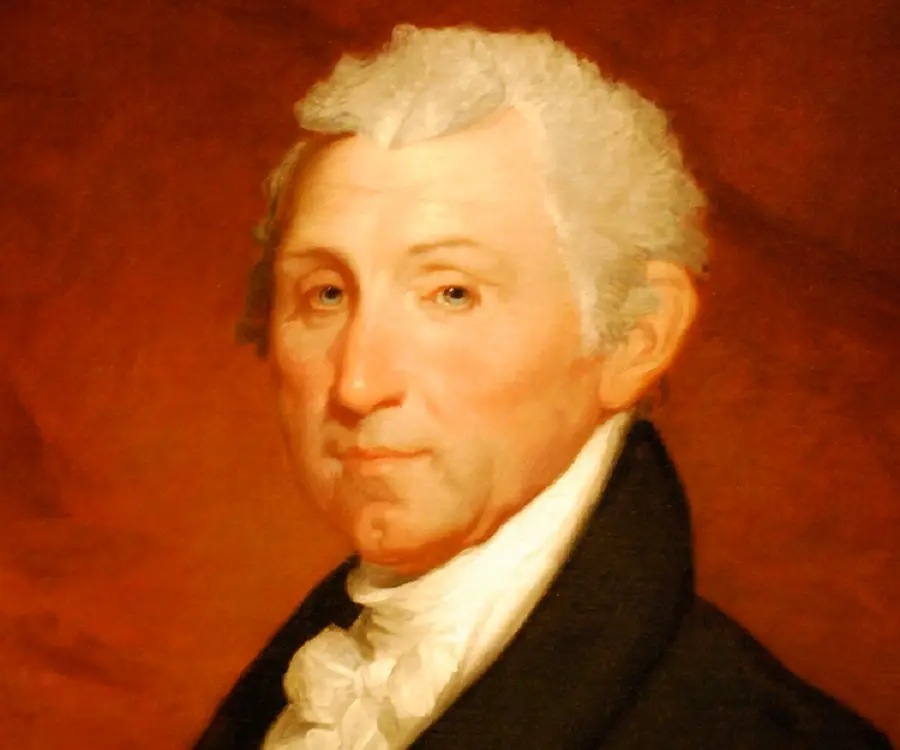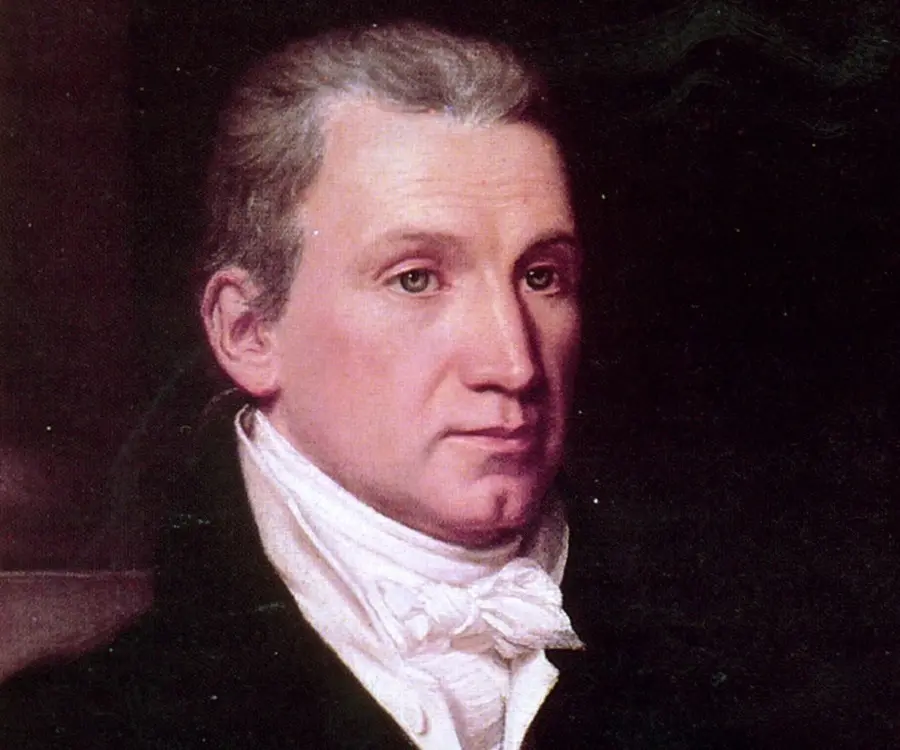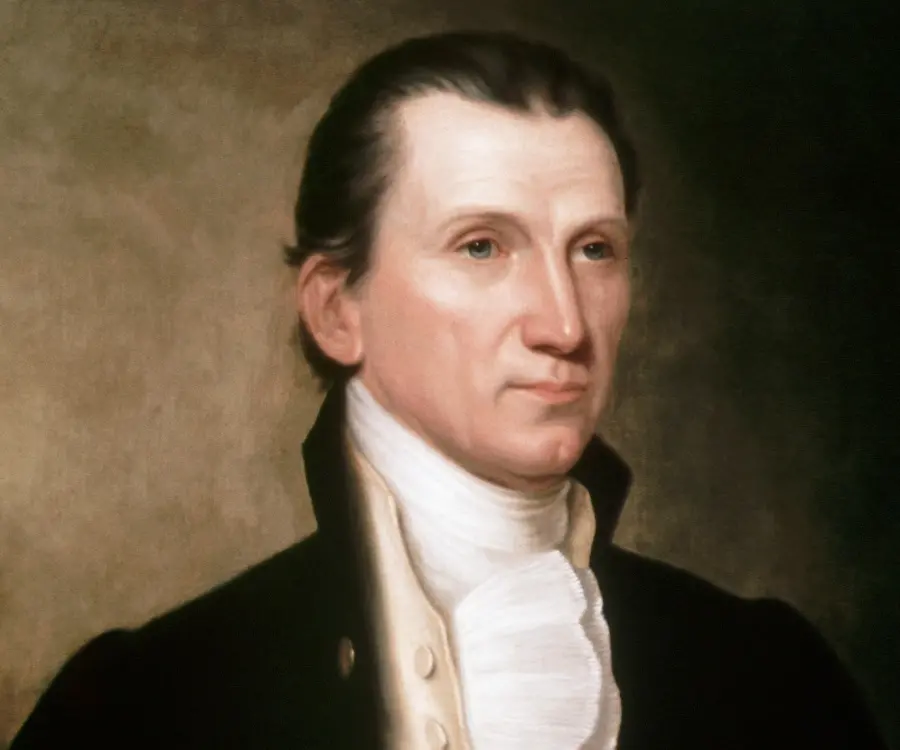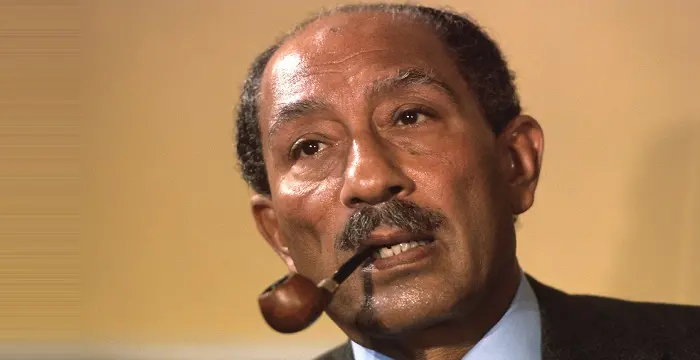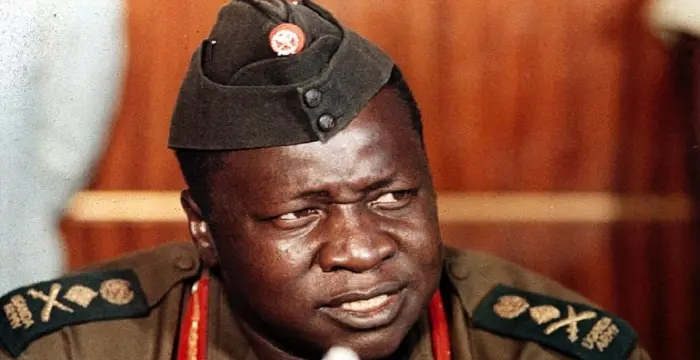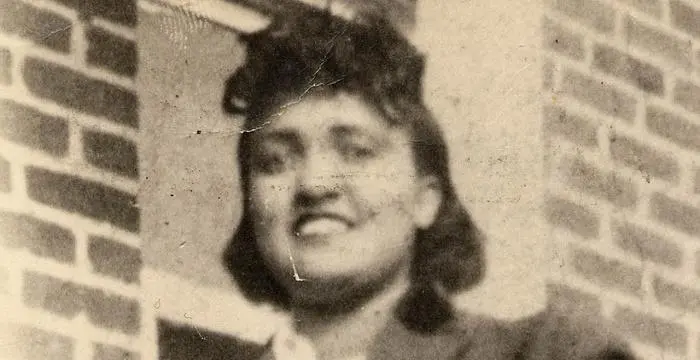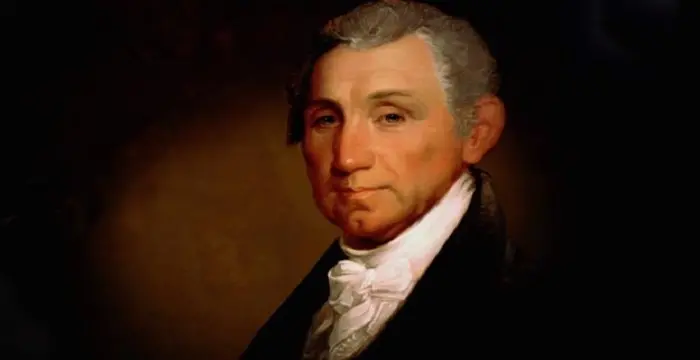
James Monroe - Fifth President of the Usa, Career and Family
James Monroe's Personal Details
James Monroe was an American politician and the fifth President of the USA
| Information | Detail |
|---|---|
| Birthday | April 28, 1758 |
| Died on | July 4, 1831 |
| Nationality | American |
| Famous | Leaders, Presidents, Fifth President of the Usa |
| City/State | Virginia |
| Spouses | Elizabeth Monroe (m. 1786–1830) |
| Cause of death |
|
| Birth Place | Monroe Hall, Virginia |
| Height | 183 |
| Gender | Male |
| Father | Spence Monroe |
| Mother | Elizabeth Jones Monroe |
| Sun Sign | Taurus |
| Born in | Monroe Hall, Virginia |
| Famous as | Fifth President of the USA |
| Died at Age | 73 |
James Monroe's photo
Who is James Monroe?
James Monroe was an American politician, revolutionary, and the fifth President of the United States of America. He was also one of the founding fathers of his country. Serving from 1817 to 1825, he was the last president of the Virginia dynasty and played an instrumental role in ushering what is regarded as the ‘Era of Good Feelings’. A native of the Colony of Virginia, Monroe grew up in a planter family, When the American Revolution War broke out in 1775, he dropped out of college to serve in the Continental Army. After the war ended, Monroe studied law under Thomas Jefferson for three years and then was instated as a delegate in the Continental Congress. A staunch anti-federalist, Monroe actively resisted the ratification of the United States Constitution. In 1790, he became a senator in the first United States Congress and subsequently joined the Democratic-Republicans. He served as the Governor of Virginia and later as the ambassador to France, garnering valuable experience as a statesman, administrator, and a diplomat. During the War of 1812, Monroe worked in the Madison administration as the Secretary of State and the Secretary of War. He was elected the President a year after the war ended in 1816, without any opposition from a fractured Federalist Party. He was a well-loved president during his tenure and has been assessed as an above average president by most historians. His presidency saw the conclusion of the first period of American presidential history before the Jacksonian democracy and the Second Party System era started. As with most of the founding fathers, Monroe kept slaves in his plantation. In later life, he encountered financial problems and had to sell a significant portion of his properties to pay off his debt. He passed away in 1831 in New York at 73 years of age.
// Famous Presidents
Khalifa bin Zayed Al Nahyan
Sheikh Khalifa bin Zayed Al Nahyan is the current President of the United Arab Emirates (UAE). Check out this biography to know about his birthday, childhood, family life, achievements and fun facts about him.
Anwar Sadat
Anwar Sadat was the third President of Egypt and has been awarded the Nobel Prize for his peace initiatives. To know more about his childhood, career, profile and timeline read on the following biography.
Idi Amin
A Ugandan dictator, Idi Amin is remembered for his brutal regime and crime against humanity. Check this biography to know in details about his life, childhood, profile and timeline.
Childhood & Early Life
James Monroe was born on April 28, 1758, in Westmoreland County, Virginia, to Spence Monroe and Elizabeth Jones. He had four siblings, one sister, Elizabeth, and three brothers, Spence, Andrew, and Joseph Jones. His father was a relatively affluent planter and carpenter who had married his mother in 1752. He was of Scottish and Welsh descent.
When he was 11 years old, his family allowed him to attend the only school in his county. He studied there for only eleven weeks a year as he helped out at his father’s farm. It was during this period that a friendship bloomed between Monroe and a boy two years old than him, John Marshall, who would later become the fourth Chief Justice of the United States.
His mother passed away in 1772, followed by his father two years later. A 16-year-old Monroe left school to support his younger siblings. One of his maternal uncles, Joseph Jones, who was childless, stepped in to take care of the Monroe children.
Jones played an important role in shaping James as a statesman. He orchestrated James’ enrolment at the College of William and Mary and acted as a catalyst in the first encounters between James and Thomas Jefferson, Patrick Henry, and George Washington.
The US Revolutionary War
In 1775, the American Revolutionary War broke out and by early 1776, Monroe had left college to join the 3rd Virginia Regiment in the Continental Army. After undergoing compulsory training, Monroe was designated as a lieutenant and was sent to the New York and New Jersey campaign.
In December 1776, he took part in a surprise attack on a Hessian encampment. While it was a successful attack, Monroe came close to dying due to a severed artery. After the battle, George Washington commended him and his captain William Washington for their bravery and promoted Monroe to the rank of captain.
During his time as a member of the staff of General William Alexander, Lord Stirling, Monroe met a French volunteer named Marquis de Lafayette. A deep bond of friendship developed between them and de Lafayette helped him understand war in the broader context of religious and political tyranny.
After the Battle of Monmouth, in which he participated, he was a complete destitute and decided to go to his uncle in Philadelphia. He had previously resigned from his commission in December 1778. He eventually chose to study law under Thomas Jefferson in Williamsburg.
At the time, Jefferson was the Governor of Virginia. He moved the capital of the state to Richmond, a more defensible city, after the British started to put more effort into reclaiming the Southern colonies. He had the control of the state militia and designated Monroe to the rank of a colonel. Monroe had the distinction of being the last US President to have served in the Revolutionary War.
Early Career in Politics
In 1782, James Monroe became a member of the Virginia House of Delegates. He briefly served on the Virginia's Executive Council before joining the Congress of the Confederation in November 1783. Monroe was a staunch supporter of the western expansion and was heavily involved in the writing and passage of the Northwest Ordinance.
After resigning from the Congress in 1786 to focus on his legal career, he was elected for another term in the Virginia House of Delegates in 1787. The following year, he joined the Virginia Ratifying Convention as one of the delegates.
On the matter of the ratification of the proposed constitution, the opinions in Virginia were quite diverse. Some supported it, others were against it. Monroe and a few others were “federalists who are for amendments”. They argued for a bill of rights and were concerned about giving away the taxing power to the central government. Eventually, although Monroe’s own vote was against it, the constitution was ratified at the convention by a narrow margin.
Monroe suffered a defeat against James Madison, who would go on to be his immediate predecessor as the US President, in the election for a House Seat in the First Congress. He later was picked to serve the remaining term of Senator William Grayson, who had died in 1790.
There was increasing contention in the US politics during Washington’s presidency. In the aftermath of the French Revolution, Jefferson, Monroe, and several others supported the French revolution while Alexander Hamilton, John Jay and their followers sided with the British. Washington sought a middle ground that would not get America involved in another war. He sent Monroe and Jay to France and Britain respectively as US ambassadors.
Monroe’s tenure in the role of the US ambassador to France was moderately successful. He secured the release of de Lafayette’s wife, Adrienne de La Fayette, and acquired the protection of US trade from French attacks. However, his failure to convince the French what the Jay Treaty between the British and the US stood for, compelled Washington to call him back to the US. Monroe decided to retreat from national politics temporarily and focus on farming, his work as a lawyer, and in the state politics.
Governorship & Diplomacy
In 1799, Monroe was elected as the Governor of Virginia on one-party line vote. Initially, his power was very restricted as per the Constitution of Virginia, but Monroe sought to change that. He modified the functionality of the state legislature, helped set up the state's first penitentiary, and actively opposed the Federalist views. He also sent the state militia to suppress Gabriel’s Rebellion, a slave uprising that spread from a plantation six miles from Richmond.
Following the end of Monroe’s gubernatorial tenure, President Thomas Jefferson sent him to France to help Ambassador Robert R. Livingston with the Louisiana Purchase. It was a successful venture, as the US bought the entire territory of Louisiana from France for $15 million.
In 1803, he was appointed as the US ambassador to Great Britain. Three years later, he worked out the Monroe–Pinkney Treaty, which extended the understandings reached between the nations in Jay Treaty for another ten years. It faced opposition from President Jefferson himself as it did not curtail the British impressment of US sailors. The US administration did not look for another treaty with Britain and the animosity that developed between the nations as a result, ultimately made way for the War of 1812.
Tenure as the Secretary of State & Secretary of War
In 1811, Monroe was preparing to serve another term as the Governor of Virginia, when US President James Madison reached out to him seeking to appoint him as the Secretary of State. Monroe was initially reluctant to take the job because his relationship with Madison had deteriorated over the years. However, Madison was successful in convincing him and Monroe assumed office in April 1811.
From the beginning, Monroe’s main objective was to put a stop on the French and British attacks on the US merchant ships. He negotiated with the French but the British continued to prey on the US vessels. This failure in diplomacy increased his frustration with the British and he too began demanding war with the British Empire. The US Congress officially declared war on Britain on June 18, 1812.
The war did not go well for the Americans at the start and they sought peace but were rejected by the British. Monroe was later made the Secretary of War by Madison and for a while he held both offices. The War of 1812 ended after the Treaty of Ghent was signed on December 24, 1814. It brought back the status quo ante bellum and many of the issues between the two nations from before the war still remained.
The Fifth President of the United States
Because of his war-time leadership, James Monroe had garnered rapturous popularity in the country and was the most likely successor to Madison’s post. During the 1816 presidential election, Monroe, a candidate for the Democratic-Republican Party, defeated the Federalist Party candidate Rufus King, winning 183 out of 217 electoral votes.
It was in Boston, in 1817, that a newspaper dubbed his visit to the city as the beginning of the ‘Era of Good Feelings’. His government included Vice President Daniel D. Tompkins, Secretary of State John Quincy Adams, and Secretary of Treasury William H. Crawford. He was re-elected in 1820 virtually unopposed.
Major Works as the US President
The people of the Missouri Territory were looking for a way to be included into the Union and a bill had been passed in February 1819 stating that if they created a state constitution, they would get the admission. However, the Tallmadge Amendment, offered by Congressman James Tallmadge, Jr., almost prohibited that, by demanding further reduction of slavery in Missouri. In the end, both bills were rejected by the Senate and Missouri gained its admission into the Union on January 26, 1820.
On the diplomatic front, Monroe improved America's relation with Britain and Russia by signing several treaties with the respective countries. He supported the rebellions in several South American countries against Spain and officially recognized Argentina, Peru, Colombia, Chile, and Mexico as independent nations. He also led the US acquisition of Florida from Spain.
Monroe owned slaves. He even brought several slaves to serve him and his family at the White House. He was a member of the American Colonization Society that wanted to create a colony outside America for freed slaves. The primary reason for this was to prevent the free blacks inspiring the slaves to start a rebellion. The society purchased land in Africa with about $100,000 in federal grant money. This land later came to be known as Liberia. Its capital, Monrovia, was named after Monroe.
Personal Life & Legacy
James Monroe married New York native Elizabeth Kortright on February 16, 1786, in New York. They spent their honeymoon in Long Island, New York, and then came back to New York City to stay with Elizabeth’s father until Congress adjourned. They later moved to Charlottesville, Virginia in 1789, where they purchased an estate named Ash Lawn-Highland. The Monroes eventually settled down there in 1799. They had three children together.
Eliza Kortright Monroe Hay (1786-1840) was their first child. She was educated in Paris during her father’s tenure as the US ambassador to France. Due to her mother’s fragile health, a number of duties of the official hostess were performed by her. James Spence Monroe was born after Eliza, in 1899. However, he died in infancy 16 months later. Maria Hester Monroe (1804-50) was James and Elizabeth’s youngest daughter. She wed her cousin, Samuel L. Gouverneur on March 8, 1820. Their wedding was the first ever wedding of a president’s child to be conducted in the White House.
His religious views are a matter of scholarly debate. No letter has been found over the years in which he has expressed his religious beliefs. It is known that his parents were members of the Church of England and he went to Episcopal churches as an adult. In many of musings, he had talked about an impersonal god, which led many historians to believe that he had “deistic tendencies’. In 1832, Reformed Presbyterian minister James Renwick Willson called him “a second-rate Athenian philosopher’.
He had incurred a significant amount of debt during the time he was a public figure. He often had to sell land or other properties to pay off the debt. He served as a delegate in the Virginia Constitutional Convention of 1829-1830.
His wife, Elizabeth, passed away on September 23, 1830. After this, Monroe moved in with Maria and her husband Samuel. He had been suffering from health issues since the late 1820s. Monroe died from heart failure and tuberculosis on 4 July (Independence Day) 1831. While he was initially buried in the Gouverneur family's vault in the New York City Marble Cemetery, his remains were exhumed 20 years later and reburied at the President's Circle in Hollywood Cemetery.
// Famous Leaders
Edi Rama
Edi Rama is the current Prime Minister of Albania. Check out this biography to know about his childhood, life, achievements, works & timeline.
Tecumseh
Tecumseh was a Native American leader of the Shawnee clan. This biography profiles his childhood, life and timeline.
Khalifa bin Zayed Al Nahyan
Sheikh Khalifa bin Zayed Al Nahyan is the current President of the United Arab Emirates (UAE). Check out this biography to know about his birthday, childhood, family life, achievements and fun facts about him.
James Monroe biography timelines
- // 1752 To 28th Apr 1758James Monroe was born on April 28, 1758, in Westmoreland County, Virginia, to Spence Monroe and Elizabeth Jones. He had four siblings, one sister, Elizabeth, and three brothers, Spence, Andrew, and Joseph Jones. His father was a relatively affluent planter and carpenter who had married his mother in 1752. He was of Scottish and Welsh descent.
- // 1772His mother passed away in 1772, followed by his father two years later. A 16-year-old Monroe left school to support his younger siblings. One of his maternal uncles, Joseph Jones, who was childless, stepped in to take care of the Monroe children.
- // 1775 To 1776In 1775, the American Revolutionary War broke out and by early 1776, Monroe had left college to join the 3rd Virginia Regiment in the Continental Army. After undergoing compulsory training, Monroe was designated as a lieutenant and was sent to the New York and New Jersey campaign.
- // Dec 1776In December 1776, he took part in a surprise attack on a Hessian encampment. While it was a successful attack, Monroe came close to dying due to a severed artery. After the battle, George Washington commended him and his captain William Washington for their bravery and promoted Monroe to the rank of captain.
- // Dec 1778After the Battle of Monmouth, in which he participated, he was a complete destitute and decided to go to his uncle in Philadelphia. He had previously resigned from his commission in December 1778. He eventually chose to study law under Thomas Jefferson in Williamsburg.
- // 1782 To 1783In 1782, James Monroe became a member of the Virginia House of Delegates. He briefly served on the Virginia's Executive Council before joining the Congress of the Confederation in November 1783. Monroe was a staunch supporter of the western expansion and was heavily involved in the writing and passage of the Northwest Ordinance.
- // 1786 To 1787After resigning from the Congress in 1786 to focus on his legal career, he was elected for another term in the Virginia House of Delegates in 1787. The following year, he joined the Virginia Ratifying Convention as one of the delegates.
- // 1790Monroe suffered a defeat against James Madison, who would go on to be his immediate predecessor as the US President, in the election for a House Seat in the First Congress. He later was picked to serve the remaining term of Senator William Grayson, who had died in 1790.
- // 1799In 1799, Monroe was elected as the Governor of Virginia on one-party line vote. Initially, his power was very restricted as per the Constitution of Virginia, but Monroe sought to change that. He modified the functionality of the state legislature, helped set up the state's first penitentiary, and actively opposed the Federalist views. He also sent the state militia to suppress Gabriel’s Rebellion, a slave uprising that spread from a plantation six miles from Richmond.
- // 1803 To 1812In 1803, he was appointed as the US ambassador to Great Britain. Three years later, he worked out the Monroe–Pinkney Treaty, which extended the understandings reached between the nations in Jay Treaty for another ten years. It faced opposition from President Jefferson himself as it did not curtail the British impressment of US sailors. The US administration did not look for another treaty with Britain and the animosity that developed between the nations as a result, ultimately made way for the War of 1812.
- // 1811 To Apr 1811In 1811, Monroe was preparing to serve another term as the Governor of Virginia, when US President James Madison reached out to him seeking to appoint him as the Secretary of State. Monroe was initially reluctant to take the job because his relationship with Madison had deteriorated over the years. However, Madison was successful in convincing him and Monroe assumed office in April 1811.
- // 1812 To 24th Dec 1814The war did not go well for the Americans at the start and they sought peace but were rejected by the British. Monroe was later made the Secretary of War by Madison and for a while he held both offices. The War of 1812 ended after the Treaty of Ghent was signed on December 24, 1814. It brought back the status quo ante bellum and many of the issues between the two nations from before the war still remained.
- // 18th Jun 1812From the beginning, Monroe’s main objective was to put a stop on the French and British attacks on the US merchant ships. He negotiated with the French but the British continued to prey on the US vessels. This failure in diplomacy increased his frustration with the British and he too began demanding war with the British Empire. The US Congress officially declared war on Britain on June 18, 1812.
- // 1816Because of his war-time leadership, James Monroe had garnered rapturous popularity in the country and was the most likely successor to Madison’s post. During the 1816 presidential election, Monroe, a candidate for the Democratic-Republican Party, defeated the Federalist Party candidate Rufus King, winning 183 out of 217 electoral votes.
- // 1817 To 1820It was in Boston, in 1817, that a newspaper dubbed his visit to the city as the beginning of the ‘Era of Good Feelings’. His government included Vice President Daniel D. Tompkins, Secretary of State John Quincy Adams, and Secretary of Treasury William H. Crawford. He was re-elected in 1820 virtually unopposed.
- // 1819 To 26th Jan 1820The people of the Missouri Territory were looking for a way to be included into the Union and a bill had been passed in February 1819 stating that if they created a state constitution, they would get the admission. However, the Tallmadge Amendment, offered by Congressman James Tallmadge, Jr., almost prohibited that, by demanding further reduction of slavery in Missouri. In the end, both bills were rejected by the Senate and Missouri gained its admission into the Union on January 26, 1820.
- // 1829 To 1830He had incurred a significant amount of debt during the time he was a public figure. He often had to sell land or other properties to pay off the debt. He served as a delegate in the Virginia Constitutional Convention of 1829-1830.
- // 1832His religious views are a matter of scholarly debate. No letter has been found over the years in which he has expressed his religious beliefs. It is known that his parents were members of the Church of England and he went to Episcopal churches as an adult. In many of musings, he had talked about an impersonal god, which led many historians to believe that he had “deistic tendencies’. In 1832, Reformed Presbyterian minister James Renwick Willson called him “a second-rate Athenian philosopher’.
// Famous Virginia peoples
Rudan Custodio
Check out all that you wanted to know about Rudan Custodio, the famous American YouTube Personality; his birthday, his family and personal life, his girlfriends, fun trivia facts and more.
Sofia Hublitz
Sofia Hublitz is an American actress and reality television personality. Check out this biography to know about her birthday, childhood, family life, achievements and fun facts about her.
JT Church
JT Church is an American dancer and social media personality. Let’s have a look at his family & personal life including age, net worth, and fun facts.
Tiffany Taylor
Tiffany Taylor is an American model and actress. Let’s take a look at her family and personal life including her age, birthday, boyfriends, and some fun facts.
Mama Dragun
Mama Dragun is an American transgender makeup artist and beauty guru. Check out this biography to know about her childhood, family life, and fun facts about her.
Henrietta Lacks
Henrietta Lacks was a woman whose cancer cells were used as the source of HeLa cell line. Check out this biography to know about her life and legacy.Famous as: Source of HeLa cell line
James Monroe's FAQ
What is James Monroe birthday?
James Monroe was born at 1758-04-28
When was James Monroe died?
James Monroe was died at 1831-07-04
Where was James Monroe died?
James Monroe was died in New York City, New York
Which age was James Monroe died?
James Monroe was died at age 73
Where is James Monroe's birth place?
James Monroe was born in Monroe Hall, Virginia
What is James Monroe nationalities?
James Monroe's nationalities is American
Who is James Monroe spouses?
James Monroe's spouses is Elizabeth Monroe (m. 1786–1830)
What is James Monroe's cause of dead?
James Monroe dead because of Tuberculosis
How tall is James Monroe?
James Monroe's height is 183
Who is James Monroe's father?
James Monroe's father is Spence Monroe
Who is James Monroe's mother?
James Monroe's mother is Elizabeth Jones Monroe
What is James Monroe's sun sign?
James Monroe is Taurus
How famous is James Monroe?
James Monroe is famouse as Fifth President of the USA
